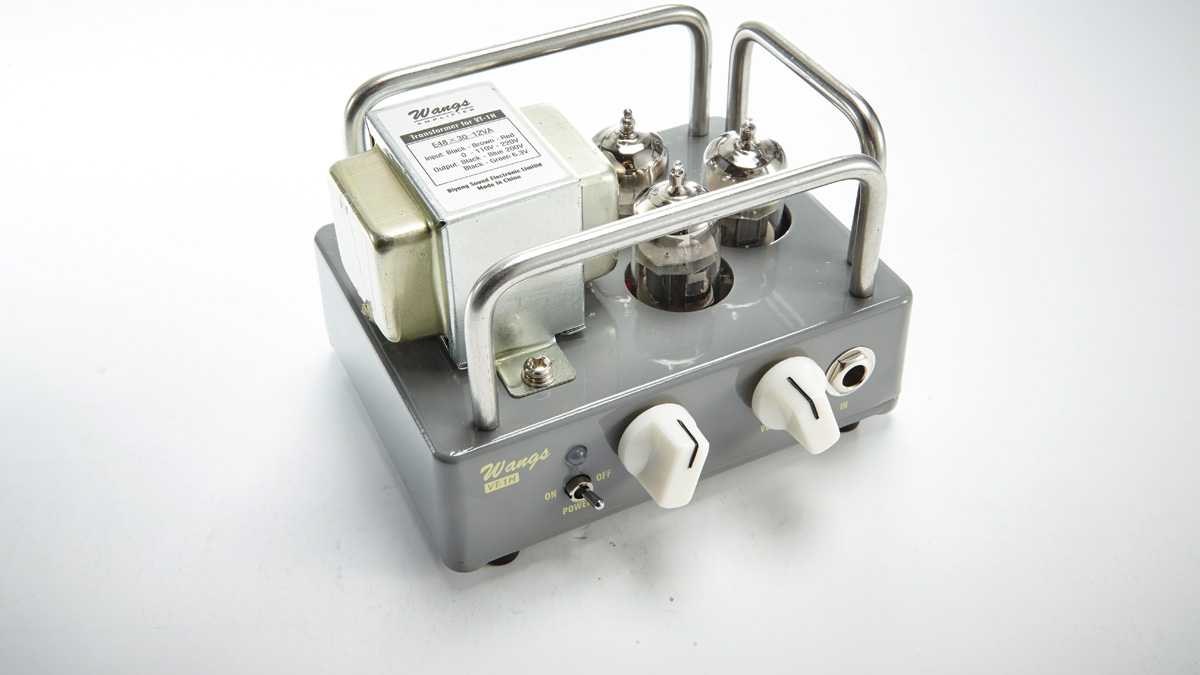MusicRadar Verdict
Great fun from a ridiculously portable unit.
Pros
- +
Loads of sustain and distortion.
Cons
- -
A couple of build niggles.
MusicRadar's got your back
We all know valve amps sound great and still manage to overhaul their solid-state cousins most of the time for tone, but they're big, heavy and expensive... or are they? One of the most portable valve heads we've ever seen has just arrived in the UK via Spartan Music: the diminutive Wangs VT-1H.
In a small box about the same size as a boutique overdrive pedal, Wangs (no sniggering at the back, please) has shoehorned an entire valve head, using a pair of 12AX7 preamp valves and a single 12AU7 to deliver an output of one watt to either an eight- or 16-ohm load.
The VT-1H's controls are minimal: volume, tone and an on/off switch, with a single guitar input and speaker outlet. At lower volumes, the clean sounds are surprisingly good, with a crisp treble, balanced midrange and restrained bass. As you turn up the volume control, the VT1-H starts to overdrive in a pleasing AC30-ish way, with a nice touch-sensitive response.
With the volume maxed, it has a ton of sustain and distortion, and it's loud - plenty loud enough for practice and recording, possibly even live gigs, thanks to modern loudspeakers, which are much more efficient than they used to be.
It's not totally perfect, mind you - a loose handle on this sample would need a board removal to correct, and the only fuse we can see is a sub-miniature type soldered directly to the PCB; but for recording and practice, it's great fun. We like!
Want all the hottest music and gear news, reviews, deals, features and more, direct to your inbox? Sign up here.
